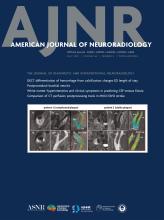Case of the Week
Section Editors: Matylda Machnowska1 and Anvita Pauranik2
1University of Toronto, Toronto, Ontario, Canada
2BC Children's Hospital, University of British Columbia, Vancouver, British Columbia, Canada
Sign up to receive an email alert when a new Case of the Week is posted.
December 6, 2018
Vogt-Koyanagi-Harada syndrome (VKH)
- Background
- Vogt-Koyanagi-Harada syndrome (VKH) is a severe, bilateral panuveitis associated with serous retinal detachments and signs of meningeal irritation, with or without auditory disturbances and integumentary changes. It is considered to be a granulomatous inflammatory syndrome, probably as a result of an autoimmune mechanism, influenced by genetic factors, and appears to be directed against melanocyte/melanocyte rich tissues.
- Clinical Presentation
- VKH syndrome has varying clinical manifestations depending on the stage of the disease. Initially there are headaches, meningismus ,CSF pleocytosis, and occasionally focal neurologic signs. Later, bilateral panuveitis in association with serous retinal detachment is seen; other ocular manifestations like iridocyclitis, diffuse choroidal thickening, and hyperemia of the optic disk (which lasts several weeks) are also described. Auditory symptoms are reported too. The chronic phase manifests with integumentary signs, as described below.
- There are three distinct categories, classified as complete, incomplete, and probable VKH syndrome based on the following criteria:
- Uveitis without a history of ocular trauma or surgery
- Uveitis without clinical or laboratory evidence of other ocular disease
- Bilateral uveitis with retinal detachment
- Neurological/auditory signs/symptoms. Meningismus (malaise, fever, headache, nausea, abdominal pain, stiffness of the neck and back, or a combination of these factors), Tinnitus, or Cerebrospinal fluid pleocytosis
- Integumentary finding (not preceding onset of CNS, ocular disease, Alopecia, Poliosis, Vitiligo)
- Complete VKH syndrome manifests all 5 criteria, whereas incomplete VKH (as with this woman) manifests criteria 1-3, along with either 4 or 5. Probable VKH represents isolated ocular disease with criteria 1-3. Thus, the extraocular clinical manifestations of complete VKH syndrome may not be fulfilled until months or years following the initial presentation of ocular disease.
- Key Diagnostic Features
- MR imaging is a helpful tool in diagnosing VKH syndrome. In addition to the typical ocular findings of bilateral symmetric choroidal thickening with retinal detachment and enhancement on postcontrast images, scattered periventricular white matter lesions on T2- weighted imaging/FLAIR have also been described. More recent reports have described lesions within the brain stem and peduncle, as well as pachymeningeal enhancement.
- Because pachymeningeal enhancement has only recently been described in early 2010, meningeal enhancement and other cerebral findings on MR imaging have not yet been factored in as criteria for VKH. However, CSF pleocytosis is included as a criterion for VKH syndrome.
- MR imaging helps ascertain the diagnosis based on extraocular findings. Although it is a systemic condition, 54% of patients with VKH have findings limited solely to ocular inflammation during the early phase of the syndrome.
- Differential Diagnosis
- The main differential diagnosis includes other causes of posterior uveitis and panuveitis, particularly primary intraocular lymphoma, ocular Lyme borreliosis, sarcoidosis, and sympathetic ophthalmia among others.
- Primary intraocular B-cell lymphoma: Must be excluded in older patients who present with uveitis and CNS symptoms. Imaging appearance of primary CNS lymphoma is of a CT hyperdense avidly enhancing mass with T1 hypointensity, T2 iso to hypointensity, restricted diffusion, and intense homogeneous enhancement on MRI. Subependymal extension and crossing of the corpus callosum may be present. Lumbar puncture and MRI are helpful, and confirmation is usually by vitreous and/or chorioretinal biopsy.
- Ocular Lyme borreliosis: Besides multiple, nonspecific foci of T2 prolongation in white matter, nerve-root or meningeal enhancement may be seen on MRI. Bilateral granulomatous iridocyclitis and vitritis is more common. Lyme disease may present with focal neurologic signs, including cranial nerve palsies and optic neuritis, which are unusual in VKH.
- Sarcoidosis: Neurosarcoidosis typically shows thickening and enhancement of the leptomeninges, especially around the basalcisterns. Other imaging findings, such as enhancing or nonenhancing parenchymal lesions, dural and bone lesions also occur in the head and spine, individually or in combination. Chronic granulomatous anterior uveitis is usually seen; serous retinal detachment is unusual. Sarcoid meningoencephalitis occurs in 5% of patients.
- Sympathetic ophthalmia: History of previous penetrating trauma to the eye is the rule; Granulomatous inflammation in the anterior segment is more common.
- The main differential diagnosis includes other causes of posterior uveitis and panuveitis, particularly primary intraocular lymphoma, ocular Lyme borreliosis, sarcoidosis, and sympathetic ophthalmia among others.
- Treatment
- Multiple therapeutic regimens have been used in the treatment, including observation, regional, oral, and intravenous corticosteroids, cyclosporine, antimetabolites, and alkylating agents. The most effective treatment regimen with the least long-term risk of complications is currrently not determined.











